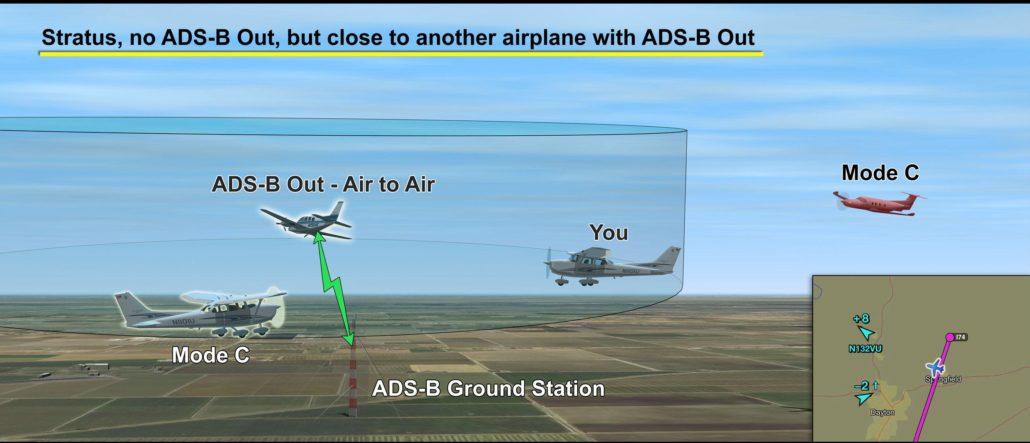Understanding ADS-B traffic
Many panel-mount ADS-B transponders, in addition to portable ADS-B receivers like the Garmin GDL 50 and the Appareo Stratus, can receive ADS-B traffic in addition to weather. But unlike weather, which is broadcast continuously, traffic is only transmitted in response to specific prompts. This can make ADS-B traffic very confusing–when does it work and when doesn’t it work?
To help, we’ve created this series of graphics, which shows three common scenarios:
Graphic 1: The most likely scenario, where you are flying with a portable ADS-B receiver, but do not have an ADS-B Out transponder installed in your panel. Here, you’ll receive any airplane that is transmitting ADS-B Out via air-to-air (no ground station required). Most airplanes do not have ADS-B Out, so this is fairly limited. You will not see regular, Mode C targets.
Graphic 2: In this case, you are still flying with a portable ADS-B receiver and no ADS-B Out in your airplane, but you are close to another aircraft that is ADS-B Out equipped. In this case, that ADS-B Out airplane is waking up the ground station and is receiving a custom traffic picture for a 30 mile “hockey puck” around that airplane. If you are close enough to that airplane, your portable receiver can listen in on that traffic message. While you won’t get a complete traffic picture, you will get a better one, since the ground station transmits Mode C targets in addition to ADS-B targets.
Graphic 3: This is the best possible case. You have an ADS-B Out transponder in your airplane, so you are transmitting out to the ground stations and creating your own “hockey puck” of traffic information. You’ll see all traffic within a 30 mile diameter and 3500 ft.
For more information on ADS-B and how to upgrade your airplane, visit our ADS-B page.



